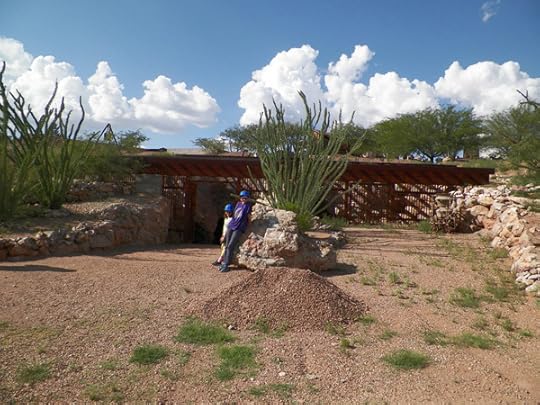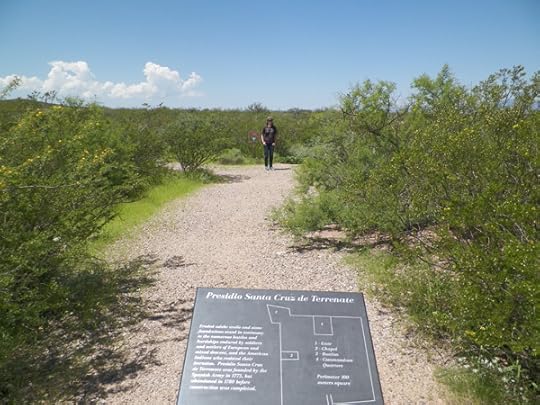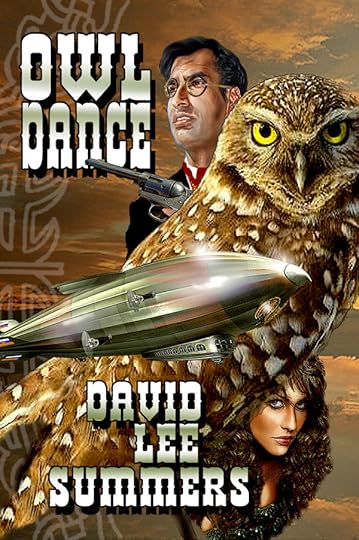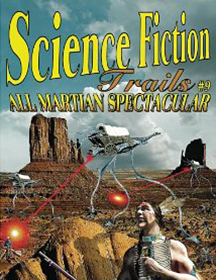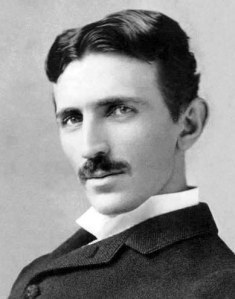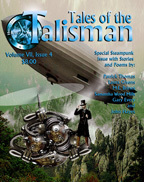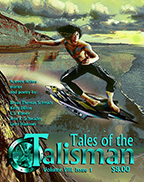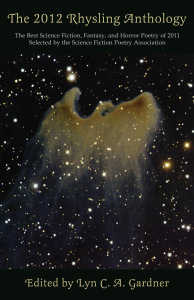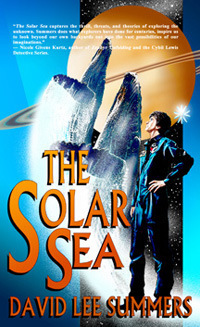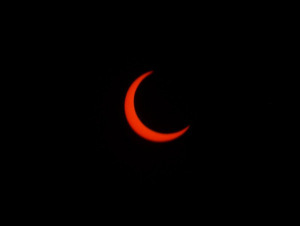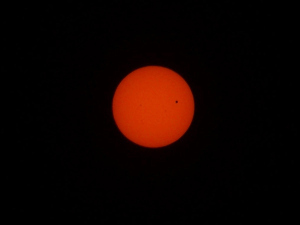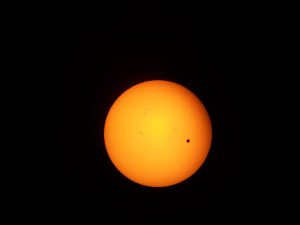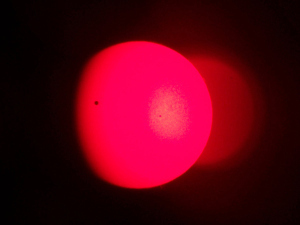David Lee Summers's Blog, page 119
August 25, 2012
CopperCon 2012
This weekend I’m in Albuquerque, New Mexico at Bubonicon. If you’re in the area, I hope you’ll drop by and join us. If you’re not in the area, but you’re near Phoenix, Arizona, I’ll be there next weekend. CopperCon 32 will be held August 31 through September 3 at the Hilton Garden Inn, 11460 West Hilton Way in Avondale, Arizona. You can get full information about the convention at their website: http://coppercon.org. I will be there on Saturday, September 1 and Sunday, September 2.
Here’s my schedule:
Saturday, September 1
11a-Noon, Vendors Room – Autographing
630p-7p, Avondale IV – Reading – “The Vrykolakas and the Cobbler’s Wife.
10p-11p, Avondale III – Panel – “Is Immortality for You?”
Sunday, September 2
Noon-1p, Avondale III – Panel – “Bringing SF Into the Classroom”
2p-3p, Avondale III = Presentation – “Discovering New Worlds” a presentation about how new planets are discovered and what’s known about them.
4p-5p, Avondale IV – Panel – “Editing is More Than Using the Spellchecker”
5p-6p, Avondale IV – Panel -”How Much Steam is There in Steampunk?”


August 18, 2012
Bubonicon 2012
I’ll be a participant at Bubonicon in Albuquerque, New Mexico next weekend. It will be held from August 24-26 at the Albuquerque Mariott Uptown at 2100 Louisiana Blvd. NE. The guest of honor is Brandon Sanderson. The toastmaster is Michael Cassutt. The artist guest is Ursula Vernon. The program book will feature my story “Perry and the Apocalypse.” You can get all the details at http://bubonicon.com

Here’s my convention schedule:
Saturday, August 25
11am in the Main Room, I’m on the panel “Post Apocalyptic Scenarios: SF Looks Past the Collapse.” On the panel with me are Adam Jarmon Brown, John Maddox Roberts, SM Stirling and Laura J. Mixon.
12:30pm in Salon C-D, I will be reading my story “The Vrykolakas and the Cobbler’s Wife” which appeared earlier this year in Cemetery Dance Magazine.
4pm in Salon C-D, I will be moderating the panel “A Plethora of New Planets: Exploration’s Next Step.” On the panel with me are Loretta Hall, Laura J. Mixon and Ian Tregillis.
5:20pm in the Main Room, I’ll be participating in the mass autographing.
Sunday, August 26
From 1:30 to 3:30, I will be taking tickets for the Author’s Tea. Those tickets will be available during the mass autographing.
Because it looked like there would be a conflict with my day job schedule, Hadrosaur Productions did not purchase a table in the dealer’s room this year. However, Who Else Books has assured me they’ll have my books and copies of Tales of the Talisman Magazine available. If you go to Bubonicon, be sure to visit Ron and Nina at Who Else and support as many of the local authors as you can.
Hope to see you at Bubonicon!


August 11, 2012
Research Trip to Tombstone
Over the past few months, I’ve been working on a sequel to my novel Owl Dance tentatively titled Wolf Posse. In the first novel, the Russians invade the United States in 1877. The second novel picks up where the first novel leaves off and explores the ramifications of the invasion.
One of the things that happens in Wolf Posse is that the characters of Professor Maravilla and Larissa Crimson explore a mystery that leads them to the mining camp that would eventually become Tombstone, Arizona. Of course, Tombstone is infamous as the site of the gunfight at the OK Corral. However, savvy readers will realize the gunfight happened in 1881 and my novel is set four years earlier. The fact of the matter is that there is a lot of interesting history that happened in Tombstone before the gunfight that I thought was worth exploring.
In 1877, Ed Shieffelin was prospecting for silver in an area called Goose Flats. Soldiers at Fort Huachuca told him that because of the terrible conditions and the Apaches in the area, all he’d ever find would be his Tombstone. Of course, when he found silver, that became the name of the mining camp. Because I wanted to know more about the silver mining in the area, I took a tour of the Good Enough Mine in Tombstone. Here’s a photo of my daughters by the entrance.
As my characters of Professor Maravilla and Larissa Crimson get to know Ed Shieffelin, they also get to know a mining engineer he worked with named Richard Gird. I found some good information in Tombstone about Gird. I also discovered that he had a house outside of Tombstone in the ghost town of Millville. It was a bit of a hike, but I made it out to see Gird’s house along with the remains of the mill where Tombstone’s silver was processed. Here’s the foundation of Gird’s house as it appears today:
One other site that I tentatively plan to include in the novel is the Presidio Santa Cruz de Terrenate. It’s one of the few surviving Spanish fortresses from the 18th century. Admittedly all that’s there now are a few walls and foundations, but still, I found it very informative to visit the site and see where it was located relative to the San Pedro River. Also, apparently enough of it was still surviving in 1878 that the U.S. Army briefly occupied the site.
When writing about a real location, there’s nothing like visiting that site so that you can understand what things look like and how a person might get from one place to another. Also, I think there’s a lot to be said for looking at a famous place like Tombstone and looking at those periods of time that have been neglected to see what history you might uncover. Tombstone has a lot of fun tourist attractions in town that are well worth visiting, but I highly recommend looking up the Presidio Santa Cruz de Terrenate and Millville and hiking the trails if you visit. Just remember to bring along plenty of water, sunscreen, and bug repellant! The trails are well maintained and there are lots of great signs with more information.
In the meantime, if you want to read Owl Dance so that you’re ready when Wolf Posse comes out, you can get more information, find out where to order, and read a sample chapter at: davidleesummers.com/books.html#owldance


August 4, 2012
Looking Back in Time at Mars
The “All Martian Spectacular” issue of Science Fiction Trails Magazine has just been released. The magazine features wonders for the imagination and ripping good stuff. Lyn McConchie, Joel Jenkins, Laura Givens, John Howard, Kit Volker, Sam Kepfield, Gary Fitzimons and Lou Antonelli share their tales of nineteenth century Martians.
Also included in this issue are my original story “Commodities of Nature” and my non-fiction article “Destination Mars”. The article discusses advances in nineteenth century astronomy and how those allowed people to imagine Mars as a real place that people could visit, and not just a point of light in the sky. People who have seen my “Victorian Astronomy” presentation at science fiction and Steampunk conventions will recognize some of the material I talk about, but I uncovered some new facts for this article and present some links for further reading.
The story “Commodities of Nature” picks up where the article leaves off. In addition to astronomy, some early radio pioneers claimed to have received signals from Mars. One of those early pioneers was the famed—at least in Steampunk circles—Nikola Tesla. In the story, an engineer has a grand vision of delivering water to all of the parched Southwestern United States through a series of canals like those observed on Mars by Percival Lowell. The engineer receives a letter from none other than Mark Twain, who urges him to visit Tesla in his Colorado Springs laboratory. There, the engineer gets a rare look at the scientist’s famed Teslascope.
Admittedly Nikola Tesla has become so highly celebrated in Steampunk circles that using him in a story runs the risk of feeling clichéd. However, I feel he’s important to the story and I bring up a few items about him that I haven’t seen in other stories. What’s more, I feel like I’ve known about Tesla far longer than he’s been popular. A friend of mine and I spent many late nights in a lab at the New Mexico Institute of Mining and Technology in the late 80s working on a Tesla Coil, and even scaring some professors in the process!
I hope you’ll check out this special issue of Science Fiction Trails Magazine.
The print magazine is available at Amazon.com.
There is also a Kindle edition available at Amazon.com.


July 28, 2012
In the Magazine Trenches
July and August mark the summer reading period for Tales of the Talisman Magazine. I’m reading for the spring and summer 2013 issues. Spring 2013 will be a special Steampunk issue. Summer 2013 will begin volume IX of the magazine and a return to the science fiction, fantasy, horror “potpourri” format.
Overall, I’ve been pleased with the quality of submissions. Sure there have been some that have been easy to turn away, but I’ve had several that have been hard to let go and I already know I have more difficult decisions in the offing.
One thing that’s been interesting this reading period is that our spring 2012 Steampunk issue of the magazine has been one of the bestselling issues in recent years. However, I’ve received a much larger number of submissions for the general science fiction, fantasy, and horror issue. I find myself wondering if this represents something of a disconnect between the stories writers are interested in telling and those readers are interested in hearing. Whether that’s true or not, it does mean that if you have a Steampunk story, this is a great time to send it in!
Each reading period, a few authors find a way to make me scratch my head in wonder. Most common are simply authors who ignore the magazine guidelines. If you ignore the guidelines, don’t be surprised if you are rejected. Less common are people who seem to violate good common sense when submitting. For example, every now and then an author will submit a work in response to a rejection—with all the rejected works in the body of the message below it! Please, if you’re going to submit a story, it will look much more professional if you send it in a brand new email. Also, there’s no need to tell me in the cover letter that I’ve rejected you some number of times before. I really don’t care. What I care about is whether the current story in my hands is one of the best for the issue I’m buying for!
In addition to reading for upcoming issues, I’m also working as fast as I can to get the summer 2012 issue of Tales of the Talisman off to the printer. I fear I’m behind schedule and I apologize. However, I am nearly finished and hope to have it out to print within the week. If you like dreaming of possible futures, this upcoming science fiction issue will be a treat.
If you’d like to learn more about Tales of the Talisman magazine—perhaps pick up a copy or submit a story, please visit our website at talesofthetalisman.com
Also, you can “like” Tales of the Talisman magazine on Facebook at facebook.com/TalesOfTheTalisman


July 21, 2012
Rhysling and Versatile Blogger Awards
I want to open this week’s post with a big shoutout to Lyn C. A. Gardner. She is a poet who has appeared on the pages of Tales of the Talisman and served as the chair for this year’s Rhysling Award given by the Science Fiction Poetry Association. Her poem “In Translation” won third place in the short poem category of this year’s Rhysling Award. Congratulations, Lyn!
Although blog awards don’t hold the same kind of prestige, I have nevertheless been honored this week to receive the Versatile Blogger Award from Marina Martindale. Be sure to drop by her blog and see what she’s been up to. She has a great blog with some excellent insights into writing and independent publishing.
The first rule associated with this award is that I’m supposed to tell you seven random things about me. Since I’m in the throes of the Tales of the Talisman reading period and trying to get a new issue out, and since it seems to fit the spirit of the award, I thought I’d shake this up a bit and give you seven things I did this week:
Read stories for Tales of the Talisman.
Edited stories for two issues of Tales of the Talisman.
Wrote introduction to the summer issue of Tales of the Talisman.
Began a new editing project for Sky Warrior Books.
Paid royalties to authors whose work appeared in anthologies I edited.
Installed a new computer in my office.
Spent a day down with the stomach flu.
One of the purposes of these awards is to “pay it forward” and suggest other blogs that you might like. I’ve compiled a list of some great blogs I’ve discovered and will post them tomorrow at The Scarlet Order Vampires blog. Be sure to stop by and check it out. I’m sure you’ll find some great sites worth checking out!


July 14, 2012
Defining Steampunk
Over the past two years, I’ve been on panels at several literary conventions that attempt to define Steampunk. I think one of the things that makes a clear definition elusive is that Steampunk is not just a literary subgenre. It’s really a subculture with strong crafting, music, costuming and lifestyle components as well. Because it’s a subculture, the elements that make Steampunk are often those items that are accepted by members of the subculture.
That said, there is a clear nineteenth century aesthetic that runs through the Steampunk subculture, but it’s not just that. The aesthetic is driven by the way nineteenth century people viewed the future. My friend David Oakes has attended a few of the panels I’ve been on and has combined some of my observations with several of his own to create an interesting definition of Steampunk. Here is his short essay on the subject, presented with his permission:
“If someone put a gun to your head, told you that you couldn’t describe any elements of the setting, that you couldn’t give a physical description of any of the characters, and demanded that you explain Steampunk only by the stories you would tell, what would you say?”
In two words?
SCIENTIFIC ROMANCE.
Not the lust for life that characterizes an Adventure story, though it is often present. Not the lust between characters in a normal Romance, though that can be there too. And not just the lust for tools and technology that drives the modern Techno-thriller either. Rather the lust for Knowledge. Even more than that, the lust for Understanding. The lust for the process of understanding that is Science.
The Technology is obviously important. But it cannot be a cold, impersonal Technology. It cannot be the sterile perfection of the “Better Living Through Chemistry” 1950s. Where Technology is once again taken out of the hands of the masses and restricted to the elite warrior-priest class of Scientists. Turned from a tool to make your life easier into one that promises to make your life better. To make you better. A goal of religious purification, the sanctification of existence through Engineering.
In Steampunk, you must be romanced by the Science. The Technology needs to be warm and inviting. It makes you want to use it because you want to use it. Not because you feel you must just to keep up, to run faster and faster and work harder and harder just to stay in place. Steampunk Technology may have its flaws, its imperfections. But that only gives it character and makes you want to love it even more.
But even more than wanting to use it, you want to get to know it. Intimately. Steampunk Technology is approachable. You can connect with it on a personal level. It invites you to look under the hood and see what makes it tick. And you can understand it. The processes are those that happen only in the heart of massive stars in distant galaxies, or at scales so microscopic that they defy common sense. No, Steampunk Technology is as easy to wrap your head around as it is to wrap your hand around. For they are one and the same. The operating principles are things you have already encountered every day of your life. The forces involved are as familiar to you as the levers in your hand or the bellows of your breathing. As natural as the wind and the rain. And for drama, the lightning. Material forces that can be understood by a physical being rather than theoretical possibilities knowable only by metaphor.
Steampunk is the stuff that Life is made of.
One of the things that really hit home for me about David’s essay is that Steampunk involves a love of Science not controlled by the “warrior-priest class of Scientists.” It struck me how well that explains the importance of Fatemeh Karimi’s character in my novel Owl Dance. She belongs to the Bahá’í Faith, a religion that eschews a priesthood, encouraging its members to know God through their own study. I like the idea that she serves as a metaphor for a genre—for an entire subculture—that encourages people to know science and technology for themselves. You can learn more about Owl Dance at: http://www.davidleesummers.com/books.html#owldance
David Oakes and I would love to hear what you think about his essay defining Steampunk. Is it close? Does it miss something critical? Let us know what you think!








July 7, 2012
The Solar Sea
My publisher is currently marketing The Solar Sea as book 4 of the Old Star/New Earth series. In a way that’s a misnomer and in a way it’s reasonably accurate.
When The Solar Sea opens, humans have all but given up on space travel. They do have industrial complexes on the moon, but they haven’t gone any further. Young Thomas Quinn dreams of building a solar sail that can traverse the solar system, but Jerome Quinn, his father, tells him to set his dreams aside. There’s nothing to be gained by exploring the solar system.
Fast forward about a decade and two things happen at once. Whales all around the Earth have changed their songs overnight and particles that can travel through time are discovered orbiting Saturn. Suddenly Jerome Quinn sees a reason to build a solar sail. He assembles a team of the best and brightest to travel on the craft and learn about the time particles.
The reason I say it’s a misnomer to call The Solar Sea book 4 of the Old Star/New Earth series is that it’s not a sequel to Heirs of the New Earth. The action in The Solar Sea is set several hundred years before the action of the Old Star/New Earth trilogy. That said, the book is set in the same universe. It tells how humans finally got into space and met the Titans and Rd’dyggians of the Old Star/New Earth books.
The Solar Sea is the first novel I ever tried to write on my own. I started it during the summer between my junior and senior years of high school. I had been inspired by a story in the Planetary Society’s newsletter about solar sails. I envisioned a story about people setting out aboard a solar sail bound for Saturn. I made it about halfway through the first draft before the summer ended. As time progressed and my writing matured, I wasn’t very impressed with what I had written and I simply threw it in the trash.
I made another attempt at writing The Solar Sea in the mid-1990s while working on Children of the Old Stars. That version became mired down in details and again, I didn’t make it very far. I finally sat down and wrote the novel in 2004, when my publisher challenged me to write something for National Novel Writing Month. By that point, it had been in my head for about two decades and it just flowed out.
The novel expresses some of my frustration that enthusiasm for human space flight has waned since I was a kid. It also expresses much of my love of science. It was always meant to be a grand adventure that gave the young and young-at-heart a glimpse of the other worlds of our solar system and addressed the fact that no matter how much we think we know about the universe, there may yet be surprises.
There is a website devoted to The Solar Sea at http://thesolarsea.com.
You could choose to read The Solar Sea as your introduction to the Old Star/New Earth series, or you could read it after you’ve finished, in order to see how the world of today became the future I envisioned. Either way, if you would like to set out on a journey through the solar system, The Solar Sea is available:
As a Nook ebook from Barnes and Noble.
As a Kindle ebook from Amazon.
As a print book from Amazon.








June 30, 2012
Kreativ Blogger Award and Updates
I was honored this week to receive “The Kreativ Blogger Award” from Paige Addams. She presented the award both this site and my Scarlet Order Vampire Site. Paige blogs about paranormal romance and is sharing her novel-in-progress. She’s raised some interesting writing issues there and it’s definitely a blog worth checking out.
For those who aren’t familiar with “blog awards” they basically are a way for people to share blogs they like. The “Kreativ Blogger” award was started in Norway by a lady named Hulda and she literally handcrafted the award and posted a photo to her blog. Here’s the original version that first hit the internet in May 2008:
The spirit of these awards is to “pay it forward” and recommend other blogs you like. Let me start out by recommending those blogs I have linked in the left-hand sidebar. Ernest Hogan, Emily Devenport, Robert Collins and Gayle Martin all have great things to say at their sites.
In addition to these, I have to give a special shoutout to Emily Guido who has been a loyal follower of both my blogs. I have been enjoying her excerpts from the “Light-Bearer” series about a group of angelic light bearers and their allies, the blood hunters. She also honored me with the “Lucky 7 Meme Award” which I’ll cover as part of tomorrow’s post at the Scarlet Order Vampire’s page.
Sky Warrior Books runs a blog I highly recommend. They post news of interest to writers along with some great marketing tips.
O.M. Grey’s Caught in the Cogs is a blog worth checking out. She is podcasting her steampunk vampire novel Avalon Revisited and talks about polyandrous relationships. This last won’t be everyone’s cup of tea, but she has really good advice about relationships in general.
Finally, go check out Paige’s blog. I’m truly honored that she’s enjoyed both of my blogs enough to “pay it forward” and recommend me to her readers. Thank you, Paige!
Let me close out this section of the post by “paying it forward” another way. Is there a topic you’d like me to address here at the Web Journal or over at the Scarlet Order Vampires site? If so, drop me a comment. Topics related to writing, editing and astronomy will generally be covered here at the Web Journal. Topics about vampires and horror will likely be covered over the Scarlet Order Vampires page. I’m happy to see what I can do!
Coming Soon: Dragon’s Fall
I just finished reviewing the galley proofs for Dragon’s Fall: Rise of the Scarlet Order. This is the novel that tells how the Scarlet Order—a band of vampire mercenaries—were formed. It makes a journey from Hellenistic Greece through Arthurian Britain, into the Holy Land, and finally winds up in Vlad the Impaler’s Transylvania. The novel is the prequel to Vampires of the Scarlet Order which is available as:
A Nook format ebook from Barnes and Noble.
A Kindle format ebook from Amazon.com. (Note, the Kindle edition is only 99 cents!)
A print book from Amazon.com.
Dragon’s Fall is my sixth novel. Now, if you have a copy of Owl Dance, you’ll see the blurb on the back touts that as my seventh novel. The reason for that is two-fold. First off, I finished writing Dragon’s Fall before I finished writing Owl Dance. Also, although the entire novel is just now moving into production, parts of Dragon’s Fall have been available for a while. Dragon’s Fall is a novel in five acts. Here are links where you can learn about the first two acts:
Learn about Dragon’s Fall: Bondage here.
Learn about Dragon’s Fall: The Dragon’s Quest here.
Tales of the Talisman Submissions
Tales of the Talisman Magazine opens to submissions tomorrow, July 1, 2012. We will remain open until full. Most likely that will be somewhere around August 15, 2012. We are reading for the Spring 2013 Steampunk Issue and the Summer 2014 issue. The Summer 2014 issue will return to our potpouri format of science fiction, fantasy and horror. So, all types of speculative fiction submissions will be welcome. Be sure to follow our guidelines at: http://www.talesofthetalisman.com/gl.html. If you can’t be bothered to follow the guidelines, don’t expect me to bother reading your story. Simple as that! If you’re confused about a point, feel free to ask. I look forward to your stories and good luck!








June 23, 2012
Objects in Transit
This year has been remarkable in that we’ve have two major solar transit events close together. The first was the annular eclipse of the sun by the moon on May 20, 2012. The other was the transit of Venus across the face of the sun just two weeks later on June 5, 2012. I was lucky enough to be at Kitt Peak National Observatory for both events. Despite the fact that I operate the two largest telescopes on the mountain—the 4-meter and the WIYN 3.5-meter—most of my viewing was simply by eye with “solar viewing glasses” I picked up from the Kitt Peak visitor center or through my Kodak camera, using the same glasses. The reason for this is that those large telescopes are simply not designed to handle sunlight. They would be seriously damaged looking at the sun just like your eye would be without help.
This first photo shows the annular eclipse near Maximum at Kitt Peak. It’s taken with my digital camera through the solar viewing glasses. Kitt Peak was a little too far south to see the full annular eclipse, but the moon still did cover much of the sun. Note, clicking on the images will bring up larger views.
Here’s a photo I took of the transit of Venus using the same camera. What amazed me was that using this ordinary digital camera, not only could I see Venus (the dark spot on the right), but I could see sunspots (the lighter spots to the left).
I was especially gratified to see the sunspots since a lot of my early research in astronomy was geared to something called RS Canum Venatacorum stars. These are binary stars about the size of the sun, but with observable star spots.
Being at Kitt Peak, I was able to see the sun through small amateur telescopes with solar filters. That allowed me to see a little more detail than I could just by eye or through the camera. Here’s a little better view of transiting Venus along with a clearer view of the sunspots.
One of the other telescopes that I was able to look through included a Hydrogen-alpha filter that blocked out a lot of the sun’s glare. The photo I took has a lot of ghosting in the center, but you can still see solar prominences—flame like structures— around the outer edge of the sun at about 2 o’clock and 5 o’clock. Keep in mind, those prominences are bigger than the Earth!
What really amazes me about seeing the transit of Venus is to realize that this is the same technique we’re using to discover many of the other planets around other stars. Basically we’re looking for that little bit of star light blocked out when a planet goes between us and that star. Many of those planets do this a lot. There are planets with years as short as 2 or 3 days!
Astronomer and science fiction writer Mike Brotherton pointed out something to me that’s fun to ponder. While we were watching the transit of Venus, it’s always possible that some extraterrestrial civilization was observing both Earth and Venus transit the sun and realizing there are planets here.
Just remember, if you want to go out and view the sun, make sure you do so using sufficient eye protection such as these solar viewing glasses, available from Amazon.









